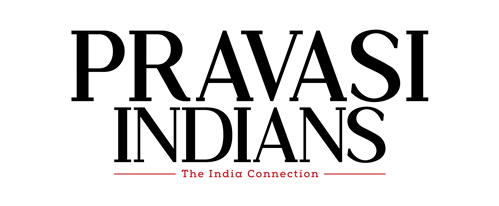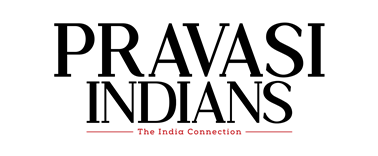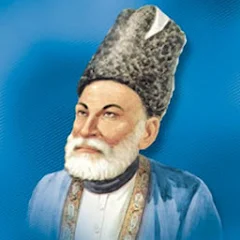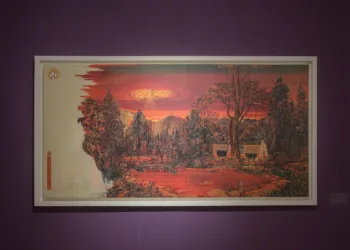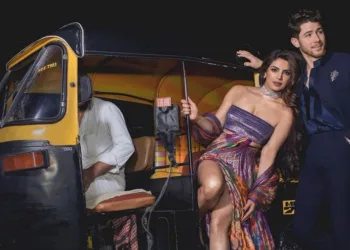Urdu celebrates the shared and composite cultural heritage of India. One of the most beautiful languages of the nation and unique to the Indian sub-continent, it should not be associated with any narrow religious or regional identity
By Akhlaq A. ‘Ahan’
Historically, languages were used to create fissures among different groups and weaken the socio-cultural fabric of this great civilisation by colonial masters. These were bred and raised through the generations as part of identity politics; and resulted into attaching languages, knowledge traditions to socio-religious identities, which have unfortunately continued even after independence and finally even become a part of academic milieu. This is among the countless fallacious beliefs creeping through bogus writings, social media, private chats and hoopla sermons. As early as in 1800, when Fort William College was established to train civil servants of the British Raj, supposedly a conjured break was introduced with teaching of Urdu and Hindi as two distinct languages written in Persian and Devanagari script respectively. Earlier the languages had mostly regional names, as prevalent as the local dialects. The earliest literary expressions are seen in the rhymes of Amir Khusraw of Delhi and Quli Qutub Shah of Deccan. The former called it as Hindawi and the latter as Dakhini or Deccani, while many centuries after them in the nineteenth century Mirza Ghalib called it Rekhta.
In the pre-colonial Indian knowledge tradition; generally languages, texts of knowledge were not restricted to identities. Abdul Qadir Badauni translated Sanskrit texts like Mahabharata and Ramayana into Persian and Chandrabhan Brahman was a leading writer of Persian and expert of Arabic of the era. Similarly, Guru Granth Sahib has compilation of many texts, and quotes from different dialects and languages. Guru Gobind Singh, the tenth Sikh Guru, primarily wrote in Persian. An educated person was supposed to be acquainted with the existing prevalent knowledge including languages and texts. It is said that when the Qutuban’s work Mirgavat was presented to Mughal emperor Muhammad Shah inscribed in Nasta’liq, he requested to bring it in Nagri script which he considered to be a better script to read.
India has been the cradle of various cultures, which co-existed and amalgamated for centuries and resulted into offshoots in the form of new sects, religions, traditions, dialects, and languages. This is what happens in any pluralistic society and civilisation. The prominent Urdu poet Raghupati Sahay Firaq Gorakhpuri rightly says:
Sar-zamīn-e-hind par aqvām-e-ālam ke ‘firāq’
qāfile baste gae hindostāñ bantā gayā
(In the land of India, people from around the world kept coming in, and the India kept getting shaped.)
The story of the origins and developments of modern Indian languages is almost the same. Especially the north Indian languages such as Bangla, Punjabi, Urdu, Hindi, Gujarati, Marathi etc are part of Indo-Arian group of languages, initially grew as dialects and incorporated the linguistic forms and lexis from Sanskrit, Prakrit, Apbhrans and Perso-Arabic-Turkic expressions and words. Urdu like many similar languages is often termed as Bint-e-Sanskrit (daughter of Sanskrit) for the very reason of its linguistic fundamentals. Interestingly, the word Urdu is derived from Turkish, while Punjabi and Hindi are Persian words, and so many words like Sardar, Asman, Khalsa, Saheb, Zameen, Radio, Potato, Computer, Car, Kursi etc of different languages are now part of cell and DNA of Indian languages.
There are many views among scholars about the genesis and development of Urdu language. Some of them suggest it is derived from Khariboli, a dialect spoken around in Delhi and adjoining areas including Western Uttar Pradesh, parts of Uttarakhand and Haryana. Some believed it is an offshoot of ‘Brij bhasha’ or the dialect prevalent in the Brij area (Agra and Mathura region). A leading scholar of Urdu, Mahmood Sherani argued that Urdu was born in Punjab, and wrote a book in 1928, titled as Punjab Mein Urdu in support of his hypothesis. This view of Punjab being the place of Urdu’s origin was earlier stated by linguists likes George A. Grierson (1851-1941) in the Linguistic Survey of India (1916) and Sher Ali Sarkhush in Tazkira-e-Ejaz-e-Sukhan (1923).One assumption is that it was a camp language (Lashkari Zaban), born as a result of interaction among people of different groups while working in the Mughal army.
Similarly, Deccan and Sindh too are suggested as places of origin of Urdu. Some of the advocates of the former view even claim to the extent that Urdu or Deccani is basically a Dravidian language and was born in South India. Thus, it should not be attached to Aryan group of languages. Even Gujarat, though so far not a claimant of being the place of origin, historically produced earliest works of Deccani or Urdu. Nonetheless, among all these hypothesises, the most credible amongst the linguistic historians is the theory that Urdu language has its origin in Shauraseni Prakrit, a middle Indo-Aryan language, concomitant to Sanskrit, and was spoken in early medieval northern India, mostly between third to tenth century. Later on, due to various reasons, it spread to different parts of the country, inculcated local idioms and became like a lingua franca of the sub-continent.
Urdu, which was known by different names in different periods and regions like Hindawi, Deccani, Rekhta etc is very similar to Sawaheli, the lingua franca of Africa. All these regions and corners of the country produced great Urdu poets and writers like Quli Qutub Shah, Wali, Mah Laqa Chanda, Meer, Anis, Ghalib, Nazeer Ahmad, Chakbast, Hali, Shibli, Iqbal, Premchand, Josh, Wahshat, Firaq, Shaad, Faiz, Sahir, Bedi, Manto, Krishna Chander and many more who continue to be the heart-throbs of the people.
Since Urdu serves as a link among people across India as well as among Indian expatriates living around the globe, it should not be associated with any narrow religious or regional identity. From filmdom to poetry gatherings or mushairas, music to mythology, patriotic literature to religious texts of almost all Indian religious and sectarian groups. from translations of Gita, Ramayana, Mahabharata to Quran, Guru Granth Sahib and Sufi Bhakti literature, songs and slogans of freedom fighters of 1857 to the revolutionary nationalists including Bhagat Singh, Pt. Chakbast, Lala Lajpat Rai, Ram Prasad Bismil, Iqbal, Josh Malihabadi, Faiz and Majaz and the flagbearers of Indian shared heritage including Maulana Hasrat Mohani, Raghupati Sahai Firaq Gorakhpuri, Jigar Muradabadi, Jameel Mazhari, Sahir, Tilok Chand Mahroom, Anand Narain Mulla; Jagannath Azad; Manmohan Talkh, Khalilurrahman Azmi, Akhtarul Iman, Pandit Anand Mohan Zutshi Gulzar Dehlvi, Shahryar, Irfan Siddiqui, Muzaffar Hanafi, Hamidi Kashmiri and hundreds of poets, writers and lovers of the language, it is unmistakably clear that Urdu has been probably the most cosmopolitan in its character and content.
Urdu is one of the most beautiful languages of India and unique to the Indian sub-continent and deeply and inseparably ingrained with many local dialects like Khariboli, Dakhini, Awadhi etc and Hindi language. Urdu has been associated with many events of historical significance. For instance, the popular slogan ‘Inquilab Zindabad’ was coined by Urdu poet Hasrat Mohani in 1921, which great revolutionary freedom fighters including Bhagat Singh pronounced with pride. Similarly, the famous couplet of Bismil Azimabadi was introduced by Ramprasad Bismil among revolutionaries:
Sarfaroshi ki tamanna ab hamarey dil mein hai
Dekhna hai zor kitna baazu-e-qaatil mein hai
During the post-globalisation era, when a variety of websites, social media forums and groups and online portals became an inseparable part of contemporary life, Urdu too attuned itself well with the new possibilities and challenges. Besides, also earned many new philanthropist and patrons for virtual programs and events such as Urdu Ghar, Ghalib Institute, Delhi, Rekhta, and similarly different online forums like London Urdu Voice, Jawaid Danish, World Urdu Forum, Halqa-e-Ahbab-e-Zauq, New York, Indo-Asia Foundation, Amroha Foundation etc around the globe which provided platforms for Urdu enthusiasts to connect and get stirred.
Recent years have witnessed a waning tendency of romancing and celebrating the composite culture of India as exemplified by Urdu language and literature; it is high time to revive this beautiful shared heritage along with all its wit, beauty, romance, passion for love and humanity.
Let the people enjoy and express in the languages they love without any inhibition or any reticence. Urdu is a language of eshq, muhabbat (love), husn (beauty), and poetry. Let it not be ghettoised in the name of identities, religions, regions etc as Kamala Das says:
Every one of you? Why not let me speak in
Any language I like? The language I speak,
Becomes mine, its distortions, its queernesses
All mine, mine alone.
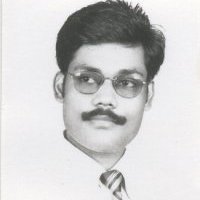
(The writer is is a poet, writer and Professor at Jawaharlal Nehru University, New Delhi.)
